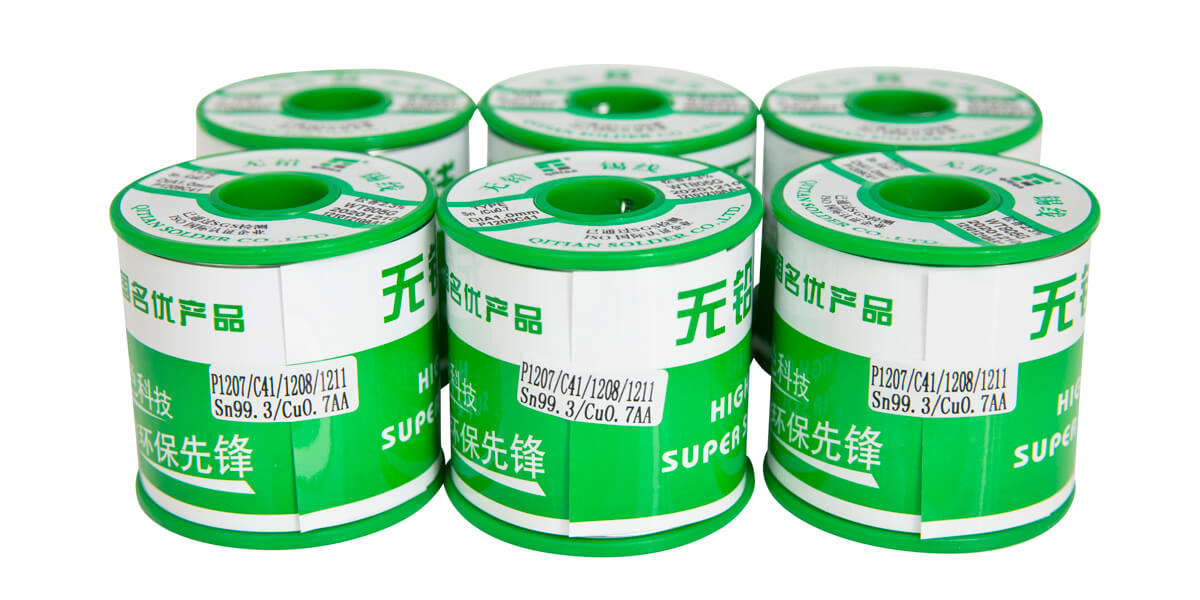What is lead-free solder?
Lead-free solder - solder that does not contain in its composition of lead. Usually the term "lead-free solder" is used in the sense of excluding lead from production to solve environmental and health problems. Thus, lead-free soft solders containing cadmium, mercury, etc. are not lead-free.
Tin Copper Lead Free Solder Wire Provides Best Features
The simplest lead free solder wire is pure tin. Its advantages are excellent wetting and the highest electrical conductivity among soft solders.
However, its use, including the installation of electronic equipment, in most cases is impossible due to the fact that it is prone to the phenomenon of tin plague, the growth of "whiskers" during thermal cycling, the formation of intermetallic surfaces with accompanying cracks.
Significantly higher soldering temperatures
It is possible to suppress the formation of gray tin by adding a small amount of other metals (copper, silver, gold), forming solid solutions with tin. However, such solders have significantly higher soldering temperatures than tin-lead.
Almost all lead-free solders have less fluidity than tin-lead solders. To improve fluidity, special flux compositions are used. The characteristics of the seam of lead-free solders, arising during long-term operation, are also worse than those of solders containing lead.
Lead Free Solder Wire with Best Heat Resistance
At the moment, none of the lead-free solders is considered a complete replacement for tin-lead and further research is underway to develop a lead-free solder to fully replace them.
If we talk about the fundamental points, then lead-free soldering practically does not differ from the traditional Sn / Pb-technology except for temperature. However, some changes may be required for certain operations of the workflow.

Solders for Brazing copper
Copper products, in particular pipes, are widely used to create systems for various purposes. To connect separate sections and parts of the pipeline, solders for brazing copper are used. The choice of a specific solder depends on the operating conditions of the brazed copper products.
Solder is a pure metal or an alloy of several metals, which, under the influence of high temperature, allows individual elements to be connected into a single network. The main advantages of soldering with solders include:
- No deformation when connecting parts;
- Saving the geometry of the connected elements;
- Lack of internal stresses at the junction;
- Strength and tightness of the connection;
- Resistance of the seam to high temperatures;
- The ability to dismantle the seam if necessary.
Soldering is performed with a special device - a soldering iron. Blow lamps and gas burners are also used for these purposes.
Main Applications And Ways To Use The Tin Wire
Some of the main proportions of tin and lead, in the same order, used in the production of tin wire and their applications can be as follows:
- Alloy 50 x 50: commonly used in hydraulic installations, but also in automotive radiators and even in industrial type heat exchangers, which use copper tubes and electroplating;
- Alloy 60 x 40: with application more focused on electronics, electrical cable terminals and connectors, components that make up printed circuit boards and others;
- 63 x 37 alloy: it is a tin wire suitable for applications similar to the previous one;
The most common materials to which tin wire is applied are: aluminum, brass, copper and bronze.
Due to its low melting point, between 183 ° C and 189 ° C, the tin wire can be melted and applied through low power soldering irons or LPG (liquefied petroleum gas) torches.
Super Metal Alloys Manufactures Tiny Yarn With Certified Quality
With a long tradition in its segment, having been founded by professionals with extensive experience in mining and foundry. Soon it formed its portfolio of excellence, which includes:
- Grade A tin: ingots, lintels, anodes;
- Tin / lead solder alloys: lint and tin wire;
- Jewelry alloys;
- Patent metal alloys;
- Solder and flux pastes.
How to choose lead-free solder?
The choice of solder should be based on the chemical composition of the product. The main characteristics of the solder and the seam obtained during soldering depend on the components. It should be borne in mind that the melting point of the material will increase in proportion to the increase in copper in its composition.
Even 1-2% copper can significantly change the characteristics of the solder. Silver affects in much the same way, but more gently. Solders with silver and indium will cost the most. Such compositions have specific applications for a narrow range of tasks, and therefore are more expensive.




